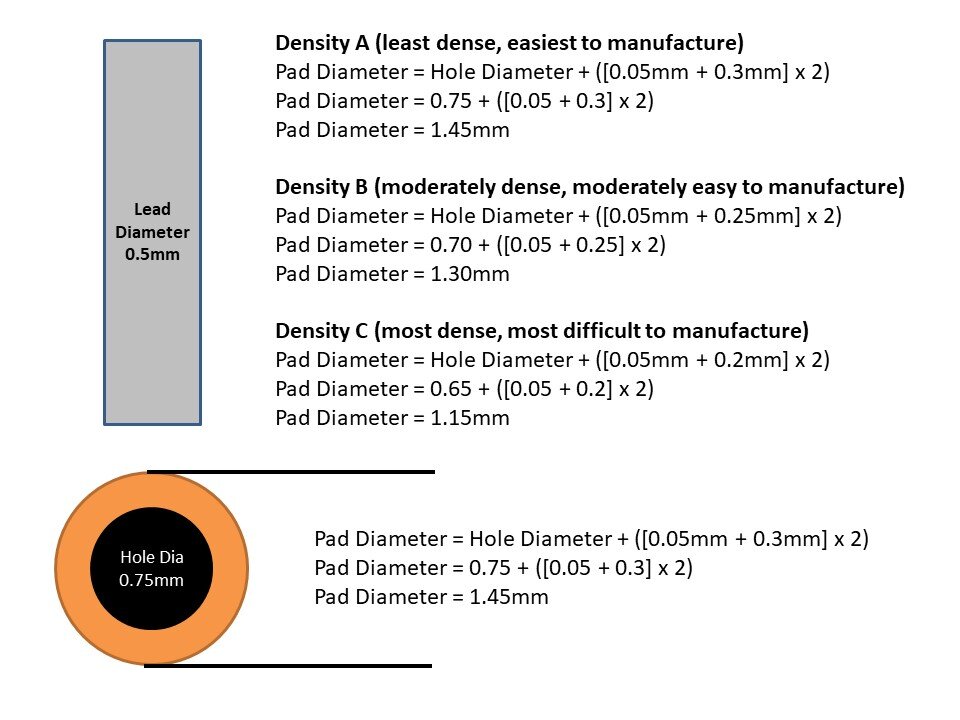When designing your footprints, it’s critical that the size of the plated-thru-holes and their associated pads be sized correctly. Making these the correct size will help make sure there are no issues assembling your PCB’s. After all, you’ve likely spent many thousands of dollars to get this done and the delays that might be introduced by something as simple as a bad hole size can be a real bummer.
There are 4 steps to designing your PTH correctly.
Determine the density of your design
Determine the lead diameter
Determine the plate-thru-hole diameter
Determine the pad diameter
1. Determining the Density of Your Design
The IPC organization suggests three different density levels in your design process.
Density A (least dense, easiest to manufacture)
Density B (moderately dense, moderately easy to manufacture)
Density C (most dense, most difficult to manufacture)
Give some thought to how densely populated your assembly will end up being. With this information in mind, you can determine your overall hole sizes and pad diameters, which we’ll cover in steps 2-4
2. Determine the Lead Diameter
This is an easy one. Take a look at the datasheet for the part you’re using and find the diameter of the lead. If the lead is rectangular, then use the dimension from the two opposite corners.
3. Determine the Plated-Thru-Hole Diameter
IPC suggests that you can take the lead diameter, add a certain value to it, and this will end up being your plated-thru-hole diameter. For Density A, this extra margin is 0.25mm. So if your lead diameter was 0.5mm then your plated-thru-hole would be 0.75mm diameter.
4. Determining the Pad Diameter
IPC suggests that you can take the hole size, add the minimum annular ring size, and then add some extra margin to determine your pad size. A typical minimum annular ring is usually 0.05mm. So if you take that 0.05mm, add to it 0.3mm, double that number, and then add it to the hole size, you’ll come up with your pad diameter.
In our example above of a 0.5mm lead diameter and a 0.75mm hole size, our pad diameter would end up being (0.05mm + 0.3mm) x 2, then add the 0.75mm hole size and you get 1.45mm
We hope you found this information helpful. As always, if you have any questions, please don’t hesitate to reach out.



